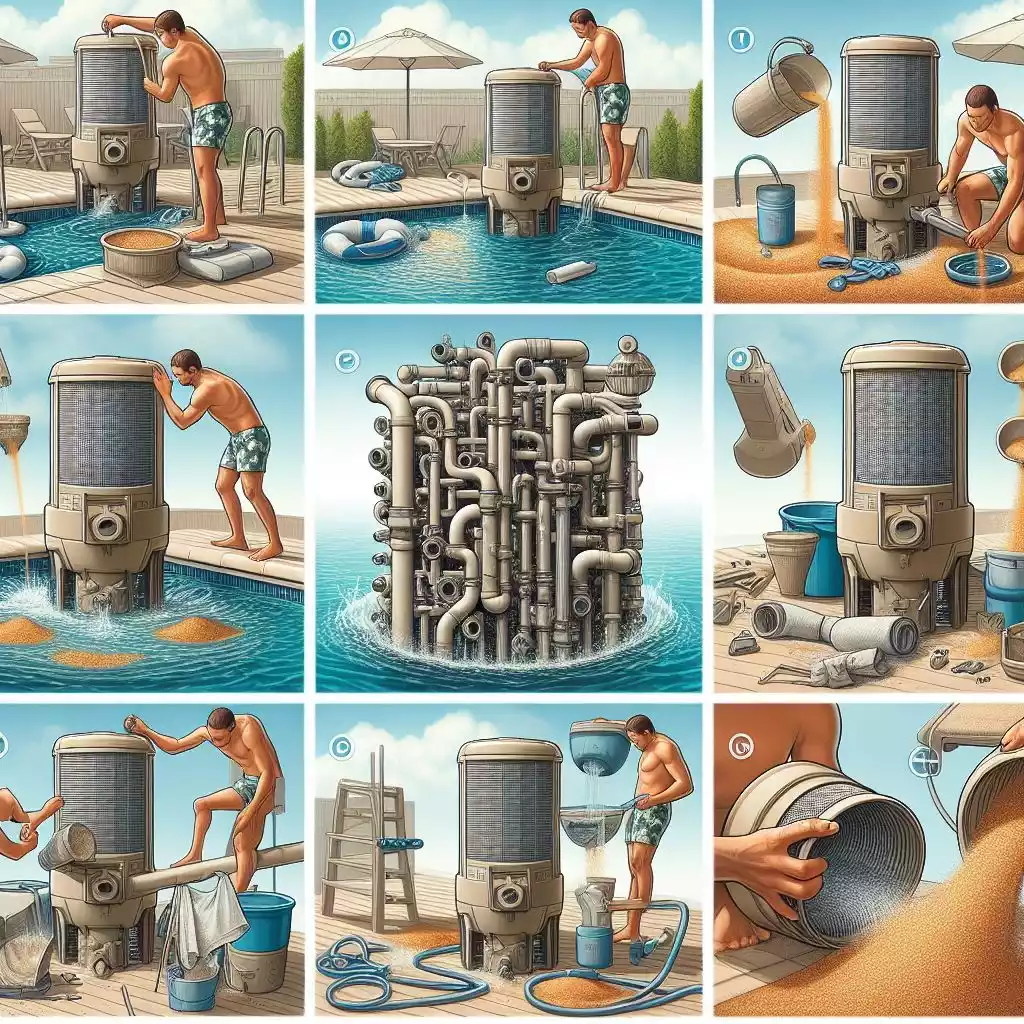To keep your swimming pool water clean and clear, the maintenance of your swimming pool sand filters is crucial. The sand in the swimming pool filter is the main filtration medium and plays a significant role in the filtration and purification of water quality. However, during long-term use, sediment accumulates, leading to serious pollution and affecting the filtration performance of the filter material, subsequently impacting water quality. Frequent use of swimming pool filters requires more frequent maintenance, with sand replacement being the most critical. So, how often should the sand in your swimming pool filter be replaced?

The number of replacements should take into account various factors. Generally, we recommend changing the sand in the sand filter every three to five years, depending on the pool’s usage and water quality. After a period of time, the sand particles become clogged with debris, grease, and minerals, causing the filtration effect to decrease and the water to become turbid.
The size of your pool and the type of filter also have a significant impact on the number of replacements. The larger the pool, the more frequently a sand filter is used, and the more often the sand needs to be changed. In contrast, the smaller the pool, the less often the sand filter is used, and the more often the sand needs to be changed. Monitoring the pressure gauge on the filter unit and carefully observing the water quality are important in determining when it is time to change the sand.
When changing sand, pay special attention to the pressure gauge reading. If the reading on the pressure gauge is 8 to 10 pounds per square inch higher than the standard, or the water is still cloudy even after correct chemical maintenance, it means that new sand needs to be replaced. In addition, always pay attention to the clarity of the water. If you find that the water quality is not good, consider changing the sand.
If your swimming pool filter sand remains consistent over time with no clumping between particles, the sand is in good condition. In this case, you don’t need to change the sand right away, as it can still play a very good role in filtering and purifying water quality. However, if you’re concerned about the condition of your sand, adding new sand won’t be too difficult. This function helps improve the water purification effect and makes the pool water cleaner. A properly functioning filter should not loosen sand during backwash. If you find that the sand particles become loose after repeated cleaning, it is likely that the sand particles have been worn away, thus losing their filtering effect. You can also replace the sand in the filter at this time.
During operation, the role of branch pipes cannot be ignored. If you can use the branch pipe correctly, you can prevent sand and gravel from mixing into the swimming pool and ensure the clean water quality. If the branch pipe is damaged, it should be replaced immediately. For example, if a bypass pipe is found to be damaged, you can repair it by replacing it to ensure its normal operation. Use the vacuum cleaner in the workshop to remove sand, replace damaged bypass pipes, and replace liquids to ensure the normal operation of the pool.
In swimming filter maintenance, regularly replacing sand is essential to ensure the water quality of the swimming pool. A reasonable material change cycle is of great significance to improving the performance of the filtration system, ensuring the quality of the effluent, and extending the service life of the filter element. Check the condition of the gravel frequently and consider replacing it if excessive dirt has accumulated on its surface. The use of scientific and reasonable filter material maintenance ensures that swimmers can swim freely and comfortably in the clear swimming pool.